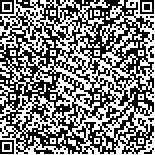| 摘要: |
| [摘要] 目的 探讨急性冠脉综合征(ACS)患者血清尿酸(sUA)水平与罪犯血管斑块特征的关联性。方法 回顾性分析2018年1月至2022年10月青岛大学附属烟台毓璜顶医院心血管内科收治的268例ACS患者的临床资料,根据sUA水平将其分为高sUA组(≥6 mg/dL,117例)和低sUA组(<6 mg/dL,151例)。比较两组一般临床资料以及冠脉造影和光学相干断层扫描(OCT)检查资料,通过多因素回归分析sUA水平与罪犯血管斑块特征的关联性。结果 高sUA组体质量指数水平高于低sUA组,男性、合并高脂血症的人数比例大于低sUA组,年龄小于低sUA组,差异均有统计学意义(P<0.05)。高sUA组血红蛋白、肌酐、甘油三酯、脂质蛋白a和同型半胱氨酸水平高于低sUA组,差异均有统计学意义(P<0.05)。低sUA组侧支循环形成率高于高sUA组,差异有统计学意义(P<0.05)。两组其余冠脉造影指标比较差异无统计学意义(P>0.05)。高sUA组管腔狭窄率、近端管腔参考面积、远端管腔参考面积、红色血栓形成率、巨噬细胞浸润率均高于低sUA组,差异有统计学意义(P<0.05)。多因素分析结果显示,sUA水平升高是促进红色血栓[OR(95%CI)=1.490(1.071~2.075),P=0.018]和巨噬细胞浸润[OR(95%CI)=1.278(1.045~1.563),P=0.017]发生的危险因素,与近端管腔参考面积呈正关联[β(95%CI)=0.492(0.155~0.828),P=0.004]。结论 sUA水平升高是促进红色血栓形成和巨噬细胞浸润发生的危险因素,值得临床医师关注。 |
| 关键词: 急性冠脉综合征 血清尿酸 光学相干断层扫描 罪犯血管 斑块特征 |
| DOI:10.3969/j.issn.1674-3806.2024.03.13 |
| 分类号:R 543.3 |
| 基金项目:国家自然科学基金项目(编号:8220503) |
|
| A study on the relationship between serum uric acid levels and patch OCT characteristics of culprit vessels in patients with acute coronary syndrome |
|
SU Xiutian1, LIU Weifeng2, WANG Hua2, REN Mengmeng2, YU Liangliang2, ZHONG Lin2
|
|
1.School of Clinical Medicine, Weifang Medical University, Shandong 261053, China; 2.Department of Cardiovascular Medicine, Yantai Yuhuangding Hospital, Qingdao University, Shandong 264001, China
|
| Abstract: |
| [Abstract] Objective To explore the relationship between serum uric acid(sUA) levels and patch characteristics of culprit vessels in patients with acute coronary syndrome(ACS). Methods The clinical data of 268 patients with ACS who were admitted to the Department of Cardiovascular Medicine of Yantai Yuhuangding Hospital, Qingdao University from January 2018 to October 2022 were retrospectively analyzed, and the patients were divided into high sUA group(≥6 mg/dL, 117 cases) and low sUA group(<6 mg/dL, 151 cases) according to sUA levels. The clinical data as well as coronary artery angiography and optical coherence tomography(OCT) examination data were compared between the two groups. The relationship between sUA levels and patch characteristics of culprit vessels was analyzed by using multivariate regression. Results The body mass index level of the high sUA group was higher than that of the low sUA group, and the proportion of males and patients complicated with hyperlipidemia in the high sUA group was higher than that in the low sUA group, and the patients in the high sUA group were younger than those in the low sUA group, and the differences were statistically significant(P<0.05). The levels of hemoglobin, creatinine, triglyceride, lipoprotein a and homocysteine in the high sUA group were higher than those in the low sUA group, and the differences were statistically significant(P<0.05). The rate of collateral circulation formation in the low sUA group was higher than that in the high sUA group, and the difference was statistically significant(P<0.05). However, there were no statistically significant differences in the other coronary artery angiography indexes between the two groups(P>0.05). The rate of luminal stenosis, proximal lumen reference area, distal lumen reference area, red thrombosis rate and macrophage infiltration rate in the high sUA group were higher than those in the low sUA group, and the differences were statistically significant(P<0.05). The results of multivariate regression analysis showed that the increase of sUA level was a risk factor for promoting red thrombosis[OR(95%CI)=1.490(1.071-2.075),P=0.018] and the occurrence of macrophage infiltration[OR(95%CI)=1.278(1.045-1.563), P=0.017], and was positively correlated with proximal lumen reference area[β(95%CI)=0.492(0.155-0.828), P=0.004]. Conclusion The increase of sUA level is a risk factor for promoting red thrombosis and the occurrence of macrophage infiltration, which deserves the attention of clinicians. |
| Key words: Acute coronary syndrome(ACS) Serum uric acid(sUA) Optical coherence tomography(OCT) Culprit vessel Patch characteristics |

